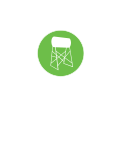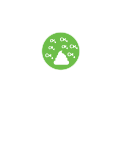Beyond methane: A life cycle approach to reducing agriculture’s footprint
Much of the conversation today surrounding agriculture’s environmental impact focuses on methane emissions from rumina...
11/09/19
Read moreAt Alltech E-CO2 we deliver and promote sustainability programmes for producers, processors, retailers and government to measure and reduce the emissions associated with producing agricultural products.
We provide benchmark opportunities for on-farm efficiency, leading towards increased profitability and sustainability with a reduced carbon footprint.
A carbon footprint is a measure of the impact that a given activity is having on the environment. It is measured by the amount of greenhouse gas that is produced with the unit CO2e (carbon dioxide equivalent).
Explore our virtual farms to learn more about where farm emissions come from.

Electricity use is often thought to generate a large proportion of a farms carbon footprint, but it only contributes around 1% on average of the total emissions of a farm.
A variety of savings can be made, such as changing to more energy-efficient lighting.
The use of renewables can help to reduce energy consumption from non-renewable sources and therefore help to improve a farm’s carbon footprint.
Examples of renewable energy include solar, hydroelectric and wind.

Enteric emissions are the methane emissions released from the animal’s rumen during the digestion of feed and forage. On average, around 39% of a farm’s total carbon footprint comes from enteric emissions, making these the largest contributor to an average ruminant farm’s footprint.
How can this be improved?
Research has shown that each cow will produce a similar amount of methane per year regardless of yield, so maximising the yield means there will be less methane per litre of milk or kilogram of meat produced.
How can production be maximised?

Feed use is the next largest contributor to a ruminant carbon footprint, making up on average 22% of a footprint. As a result of this, to maximise feed stocks it is essential to ensure livestock have the highest possible feed efficiency.
In addition, ensuring that cows have a healthy balanced rumen will ensure fibre is fully digested, which in turn helps to gain more milk from forage and maximises feed efficiency and production.

Artificial fertiliser is often needed to ensure maximum crop yields. However, a large amount of carbon dioxide is produced during the production of artificial fertiliser.
It is essential, therefore, to ensure that fertiliser use is both efficient and appropriate.
Management practises such as soil and manure analysis combined with precision application of fertilisers, can help to reduce inefficient fertiliser use.

Fuel is often considered to be one of the largest contributors to a farms carbon footprint.
However, this aspect of livestock production is often considerably lower than perceived and it only accounts for a small percentage of the total emissions from a farm.
There is potential to reduce fuel consumption by ensuring all machinery is up to date, fit for purpose and well-maintained and that unnecessary use is avoided.

The storage, management and usage of a farm’s manure (or of purchased manure) results in N2O emissions.
Nitrous oxide is emitted from the soil as a result of nitrogen application. N2O has a significantly high Global Warming Potential (GWP), making it a particularly damaging greenhouse gas (GHG).
Precision application of manure at the correct time and at the correct application rate can help to ensure that emissions are reduced.

Various other inputs into a farm have a carbon footprint. Inputs such as sprays, bedding and lime contribute a small amount to a farm’s carbon emissions.
This refers to the fermentation of feed material within the animal’s digestive system.
Within monogastric animals, this is much less significant than within ruminants.
This can be affected by the size and type of animal, along with the physical and nutritional properties of the feed blends.
The greatest cost within a pig and poultry production system is likely to be the purchase of feed.
So too the success of a system is closely related to the efficiency and conversion of this feed input. Within our model we use specific diet information about constituent feeds that are used to compose the concentrates.
The emissions from feed will be a result of the fertiliser, fuel, land use change implications of the growing crop, and also the energy used in the feed mill facility to form and process the feed.
Comprising of fuels (either heating or vehicle) and electric.
Vehicle fuel use also takes into account bedding and manure transportation and scraping, and feeding.

The emissions for manure will be dependent on the type and duration of storage.
Methane is generated from manure when is it both stored and spread on fields.
The management of manure can change the amount of methane that is produced as the manure decomposes.
Things like temperature, pH, oxygen levels and nutrient content can all effect the amount of methane produced.
Higher quality manure in conjunction with effective storage, management and application can lead to a reduced footprint.
Monogastric manure emissions are mainly methane, a gas with a global warming potential around 25 times that of carbon dioxide.
Depending on the nature of the production system, and whether a farm is farrowing on-site or not, it may be that piglets or weanlings are brought onto site from another, separate rearing facility.
In this instance, these piglets would enter the farm having an associated carbon footprint to get them to that stage of maturity.
This is important so that all farms concentrating on different growth stages can be considered equally.
This is similar for poultry farms where the chicks may arrive at the farm with an associated carbon footprint.
Depending on the nature of the production system, there may be transportation of animals between different sites or facilities.
Due to the nature of the size of the transportation involved, the emissions from the vehicles are spread across a relatively high total liveweight.
These will not be a major contributor to the carbon footprint of pork or chicken products, including eggs.
However, there is a carbon footprint for both water and chemical disinfectants used within the production cycle or for biosecurity between batches or groups of animals.
ONE: Alltech Ideas Conference 2016 Highlights
See highlights from ONE - the 2016 Alltech Ideas Conference in Lexington, Kentucky. Full video presentations from keynote speakers Alan Mulally, Steve Wozniak, Ramez Naam and more are available at http://ideas.alltech.com
See moreTHE AVERAGE FARM USES ENOUGH
ELECTRICITY TO BOIL THE WATER FOR
CUPS OF COFFEE A YEAR
THE AVERAGE ASSESSED HERD SIZE IS
000 COWSPRODUCING 7,722 LITRES EACH
WE HAVE FOOTPRINTED OVER
00,000,000QUARTER POUNDER
BURGERS WORTH OF BEEF
WE HAVE FOOTPRINTED OVER
0,000,000,000LITRES OF MILK
ENOUGH TO FILL
0000 OLYMPICSIZED SWIMMING POOLS
THE AVERAGE LAND AREA
PER FARM ASSESSED IS
000 HECTARES OR 000FOOTBALL PITCHES